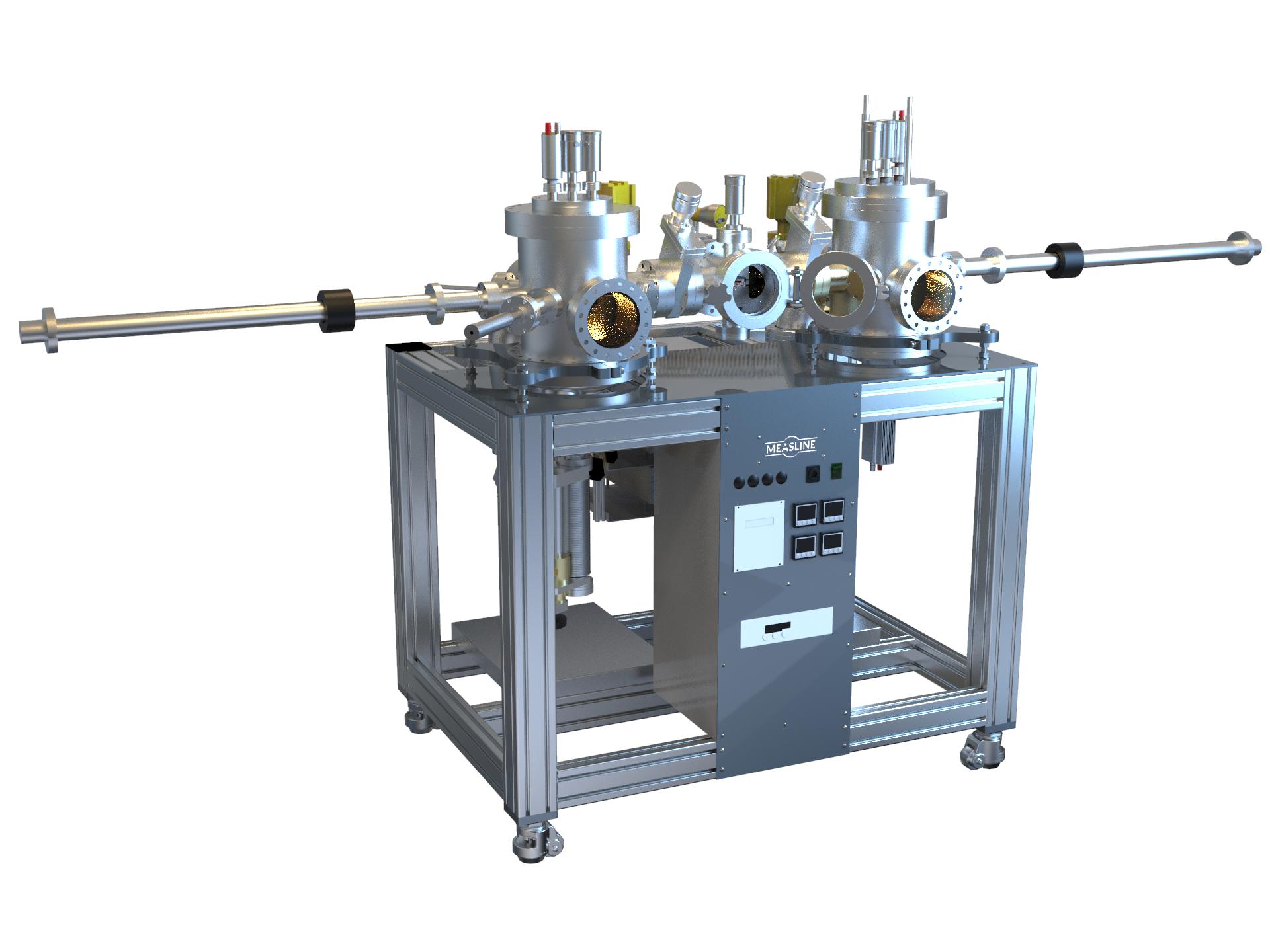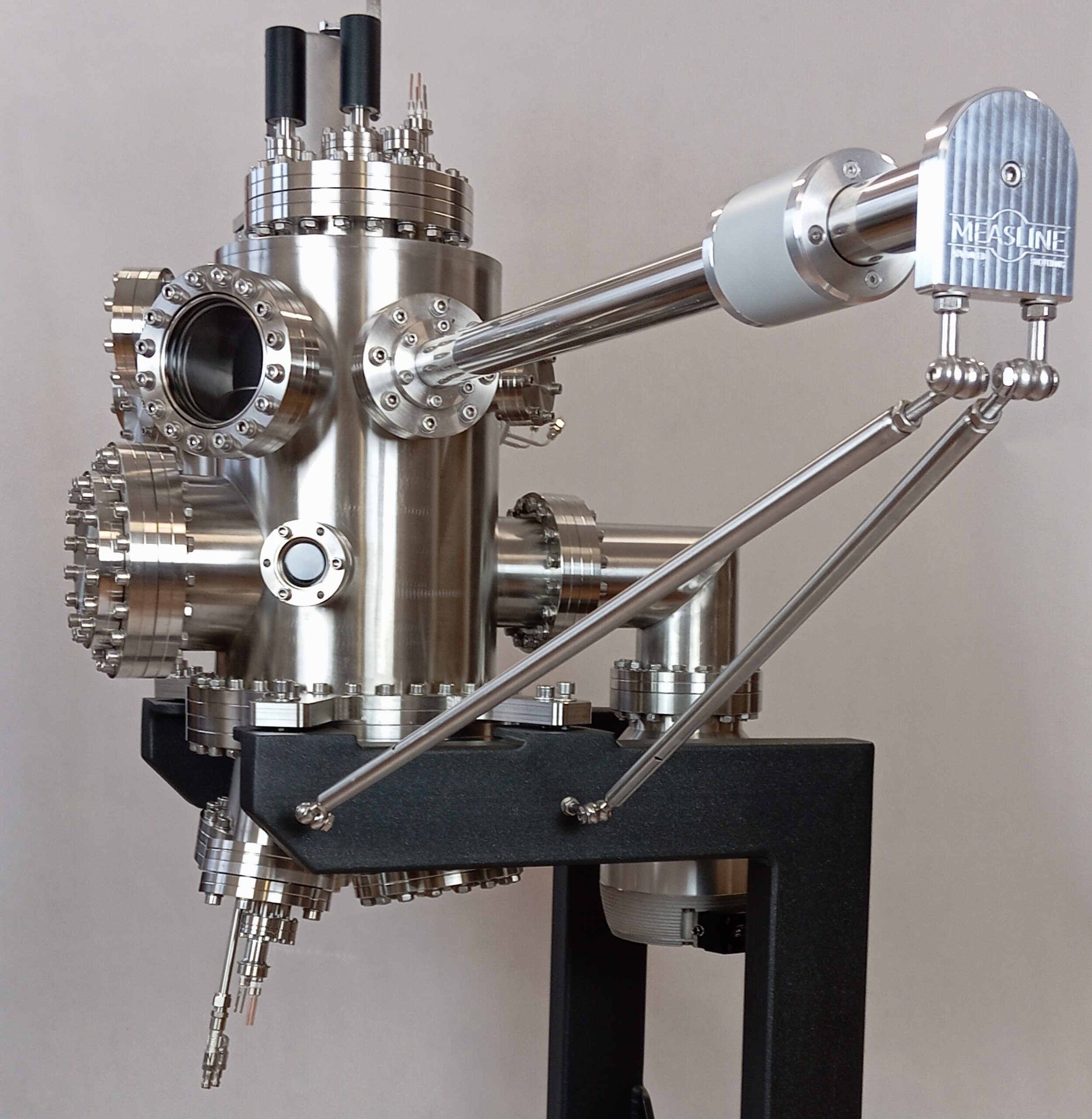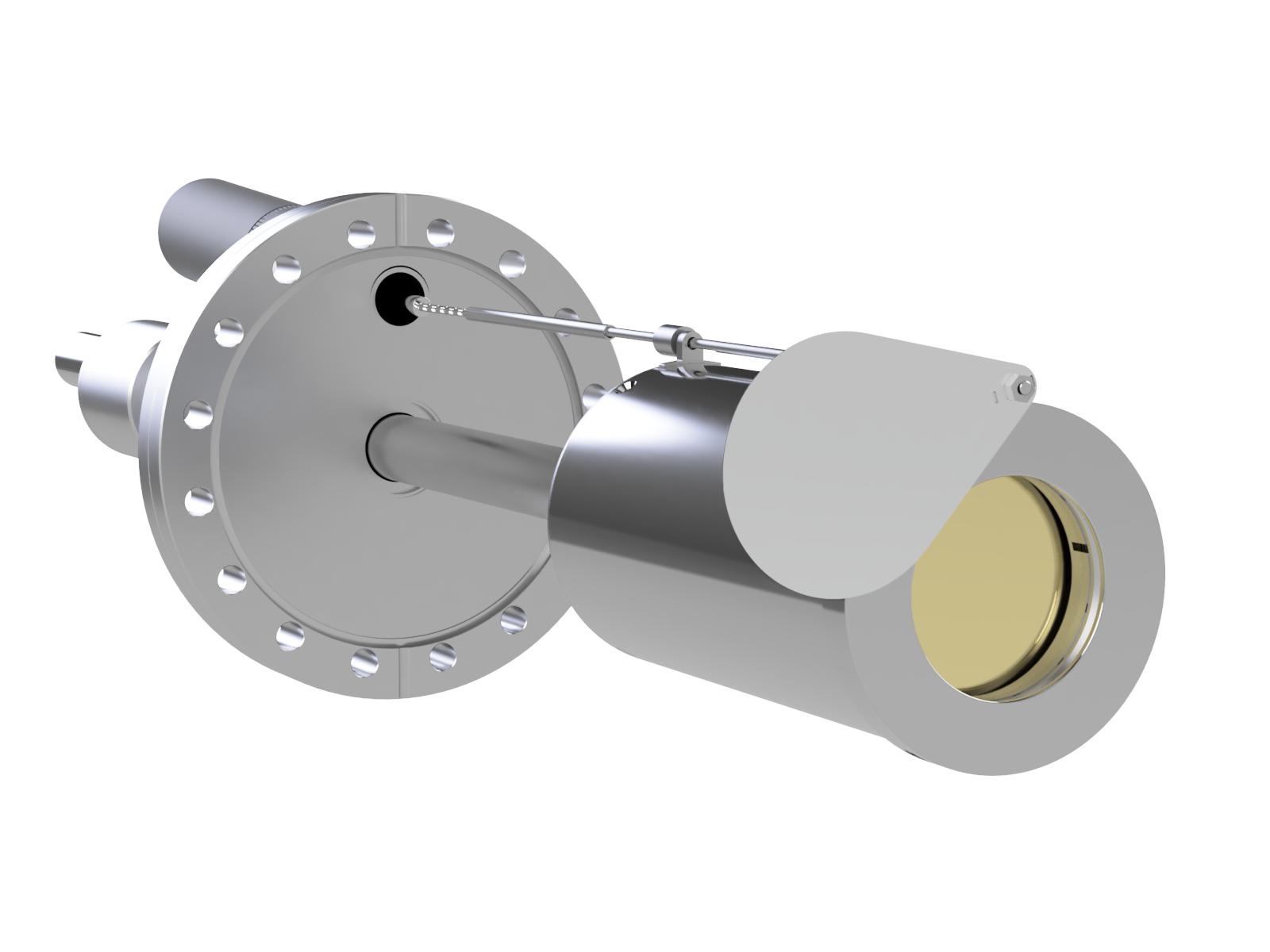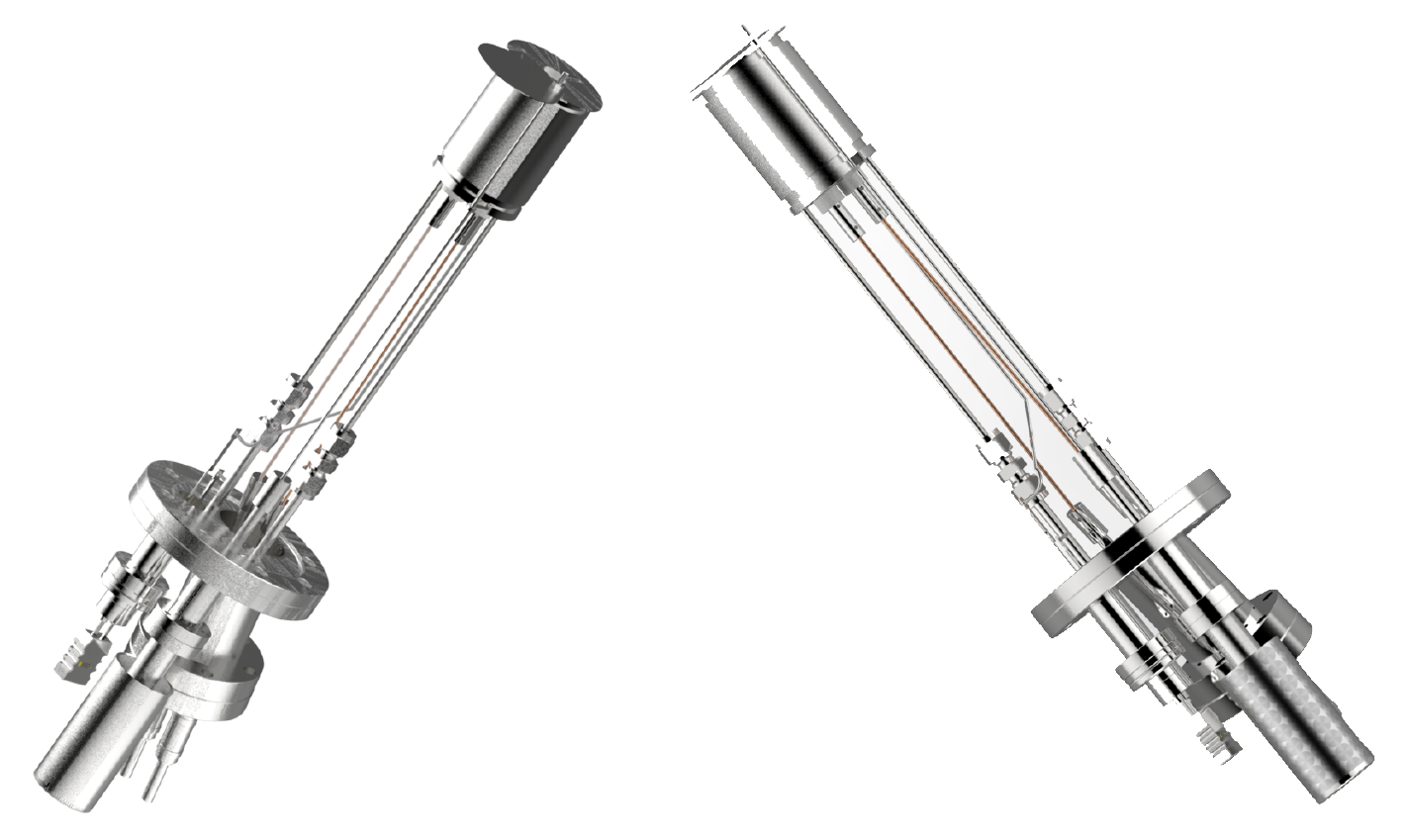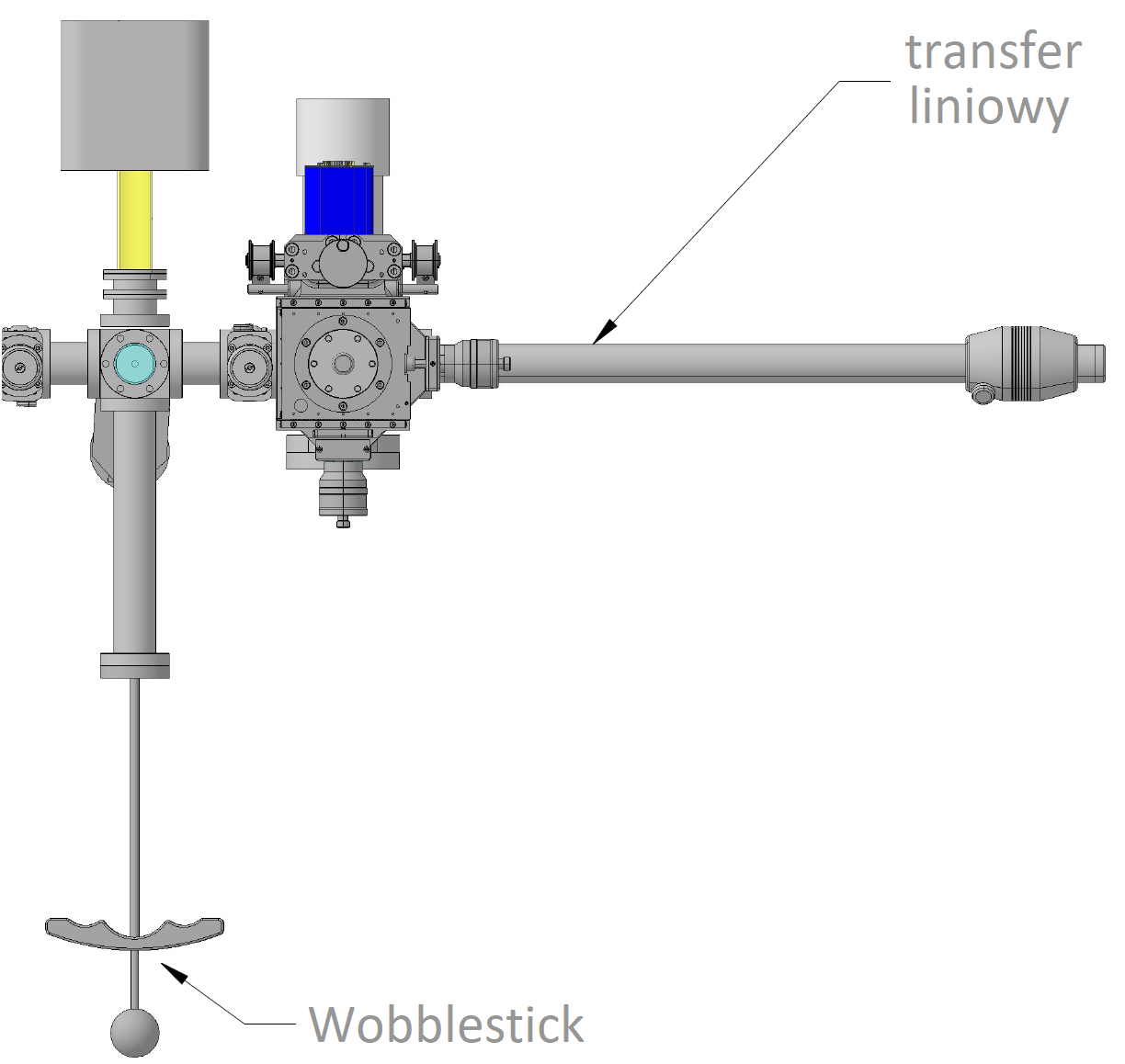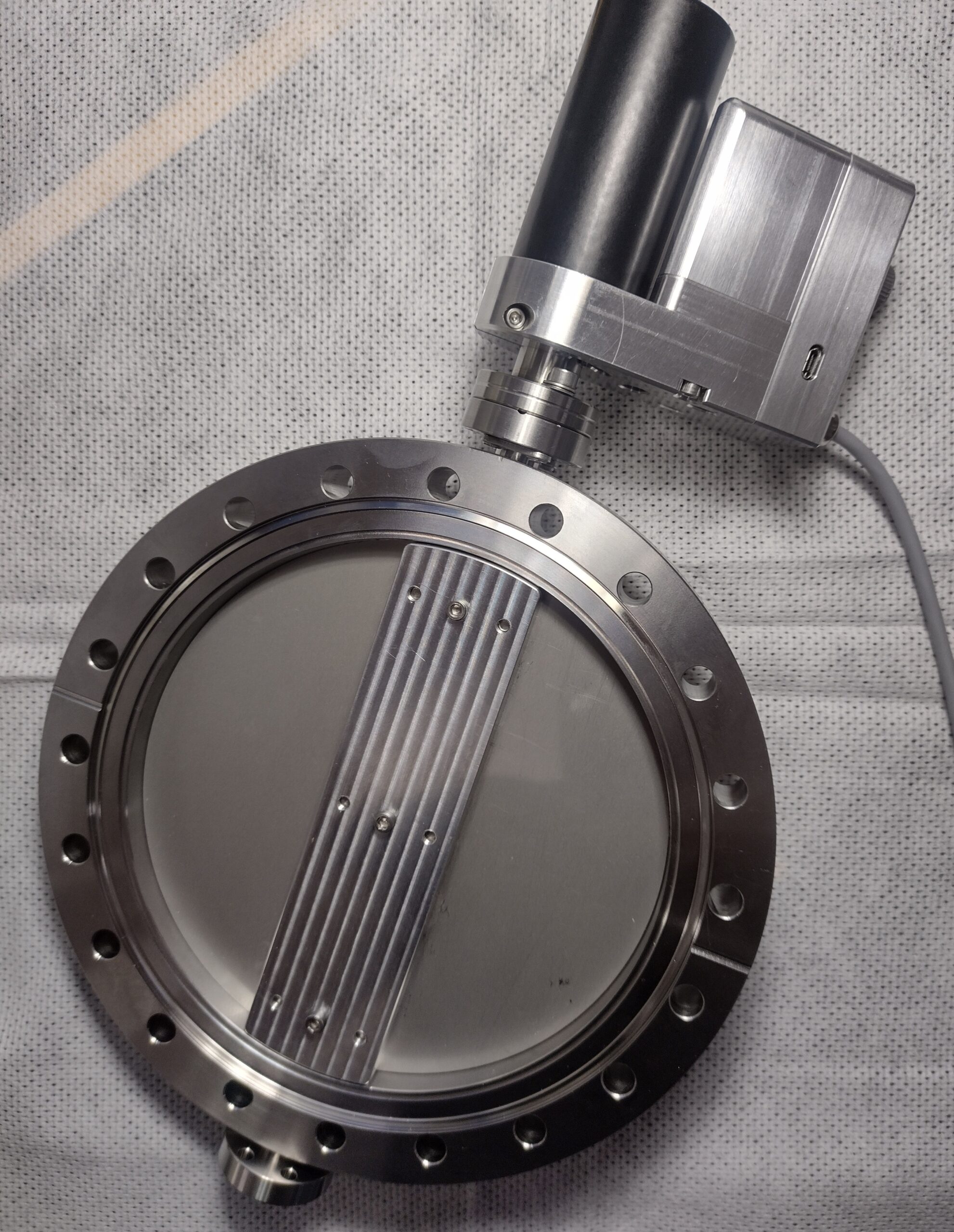Thin layer deposition
We offer a variety of systems that enable the deposition of thin layers by physical vapor deposition method (PVD) based, among others, on magnetron sputtering techniques, thermal evaporation, or systems using a combination of lithography and AFM techniques, enabling the creation of structures with atomic resolution.
All thin film deposition systems can be customized to customer requirements. The price of these devices depends on the complexity of the system.
Vacuum systems for thin-layer deposition
Compact sputtering system LPNW01
Compact benchtop sputtering system for surface metallization equipped with a container for transferring samples between the coating system and the glove box under controlled atmospheric conditions
Magnetron system for coating deposition MCS 787
A system is designed for metalizing the surface of samples or depositing thin non-metallic layers by sputtering with up to four magnetron sources. The device is equipped with a linear transfer.
Compact PVD and sputtering system for surface metallization
A device allowing the deposition of thin layers by thermal and magnetron methods, equipped with a loading chamber
PVDS 700 coating deposition system
System for thin-layer deposition using the PVD method based on the thermal evaporation
PVD system dedicated to TERS Tip Coating
The system is built to UHV standards and allows integration of up to four thermal evaporators. A access window enables the addition of source materials without venting the main chamber.
A dedicated load-lock chamber is used for introducing and removing samples under atmospheric pressure conditions. Sample transfer between the load-lock and the main chamber is carried out via a linear transfer mechanism.
Vacuum components for thin layers deposition
Magnetrons
Magnetrons enable the deposition of thin layers using the PVD method from metallic (conductive) and ceramic targets, e.g., oxides. They are equipped with valves supplying working gas. They can be adjusted to targets of 1″, 2″, 3″, or 4″ diameters.
Thermal deposition devices
Devices designed for the deposition of monolayers and multilayers using the PVD technique based on evaporation by electron bombardment from a source in the form of a wire, rod, or crucible in a wide range of temperatures.
Magnetically coupled transfers
Modules intended for sample transfer, e.g., between the loading chamber and test chambers, deposition chambers, under vacuum conditions to avoid the influence of the atmosphere on the sample and the need to aerate the chambers each time the sample is replaced.
Linear and rotational transfers with magnetic coupling are available.
Sample Heating and Rotation Station
The sample heating and rotation station is designed to accommodate a sample holder that allows mounting of samples with maximum dimensions of 50×50 mm. It is equipped with a manually operated main shutter. Sample holder rotation is driven by a dedicated motor, ensuring smooth and consistent movement. The holder is compatible with linear transfer systems, enabling sample placement.
Probe Carrier
The carrier is designed for simultaneous thin film deposition on up to 10 AFM probes. It is fully compatible with the sample heating and rotation station. Continuous rotation during deposition ensures high uniformity of the deposited layers across all probes. The carrier is engineered for integration with a linear transfer mechanism, enabling controlled transfer to and from the load-lock chamber under vacuum conditions.
Butterfly Valve
Designed for use in vacuum systems equipped with magnetron sputtering sources. During sputtering, the process gas introduced into the chamber significantly increases the internal pressure, which can adversely affect the performance and longevity of the turbomolecular pump. Additionally, the continuous removal of process gas by the pumping system leads to excessive gas consumption.
The integration of a butterfly valve at the pump exhaust enables safe pump operation by reducing the pressure load on the turbopump and minimizing the loss of process gas during pumping. The valve also facilitates precise regulation of the chamber pressure during operation.
The valve can be motorized, with an option to disengage the drive and perform manual adjustment.








